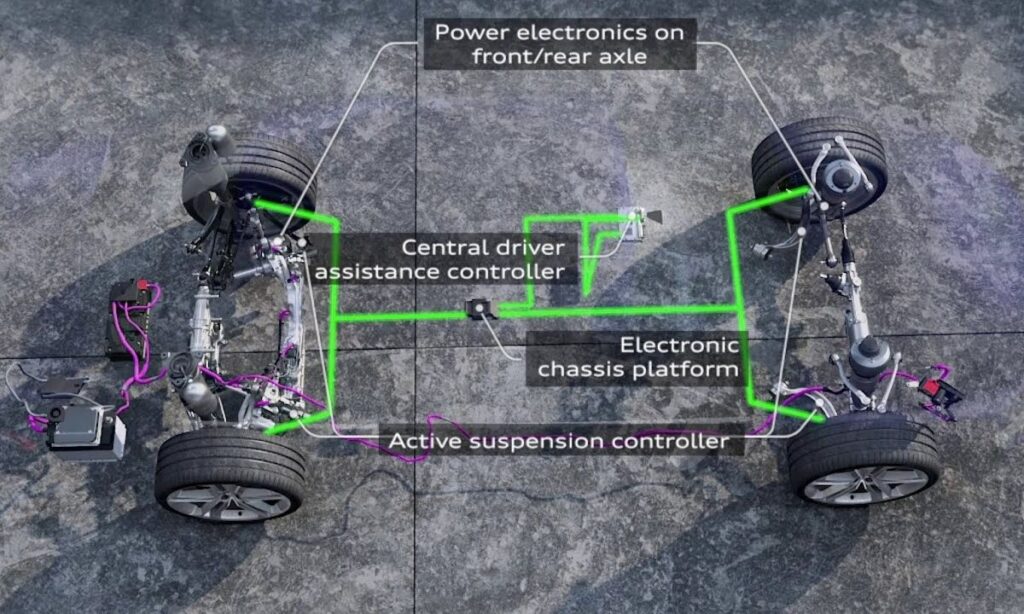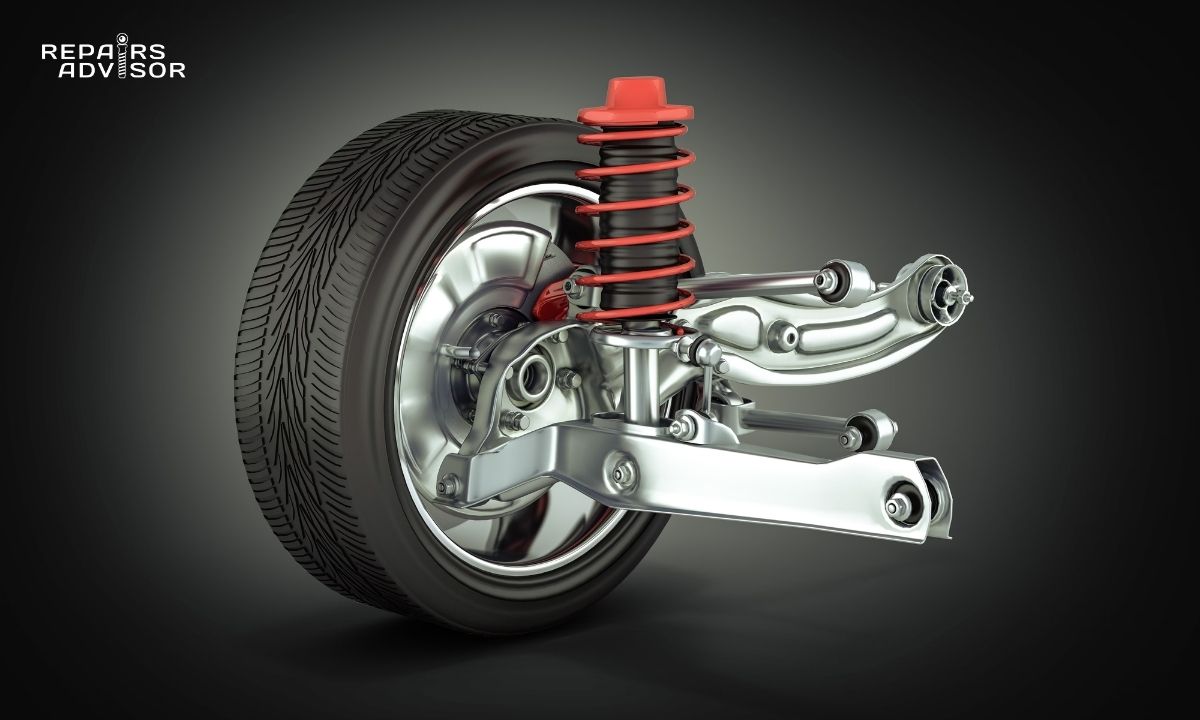Alright, let’s be real: most cars out there still use what we call “passive” suspension. That means your shocks, struts, and springs simply react after you hit a pothole or a bump. They’re just doing their best to absorb the impact as it happens.
But imagine a car that can anticipate that bump, or brace itself before a hard turn. That’s the magic of active suspension. Instead of just reacting, an active suspension system can actively control the vertical movement of your wheels. It’s constantly monitoring everything – the suspension itself, the car’s body, even feedback from your stability control and anti-lock braking systems – all in real time!
With all that data, the system’s computer can instantly adjust the stiffness and damping of your shock absorbers and/or springs. This allows it to:

- Minimize the effects of road irregularities: Think of it like the car “floating” over bumps instead of crashing into them.
- Adjust ride height: Lowering for highway cruising for better aerodynamics, or raising for off-road clearance.
- Soften or stiffen the ride and handling: Giving you plush comfort on the highway or razor-sharp control on a winding road.
- Keep the car level: No more nosediving when you brake hard, no rear-end squat on aggressive acceleration, and a level stance even with heavy loads.
- Eliminate body roll: You’ll feel the car stay remarkably flat even when cornering hard, making for a much more confident and controlled ride.
Some of the most advanced active suspension systems even use a camera to scan the road ahead, literally seeing potholes or bumps before your wheels hit them. This allows the system to prepare its response in advance, or even dynamically adjust to “skip” a wheel over a small obstacle. The result? A level of smoothness and control that passive suspension simply can’t touch.
A Brief History of Active Suspension: From Race Tracks to Your Driveway
While it sounds like futuristic tech, active suspension has been around for a while. It first popped up in the 1950s with cars like the Citroën DS. But it really took a leap forward in the 1980s when Formula 1 racing teams like Lotus and Williams adopted it. It became so successful (making cars incredibly fast and stable) that it was actually banned from Formula 1 for being too good!
But that ban just pushed automakers to bring this incredible tech to production cars. Toyota, Lexus, BMW, Mercedes-Benz, and Land Rover started integrating computerized active suspension into their high-end models in the ’80s and ’90s. Fast forward to today, and you’ll find even more sophisticated versions on high-performance cars from Porsche, Audi, and Nissan (like the GTR). Some can even compensate for crosswinds! What’s really exciting is that, just like many other premium features, active suspension is now becoming available on more affordable vehicles, like the Ford Mustang and Chevrolet Camaro.
How to Spot a Bad Active Suspension (and Why It’s Dangerous!)
Listen up: a problem with your active suspension is not something to ignore. Because this system directly controls how your wheels and tires interact with the road, a malfunction can seriously compromise your ability to control your vehicle. This could potentially lead to a loss of control and an accident.
Here are the critical warning signs of a failing active suspension:
- Suspesion Warning Light Illuminates on Your Dashboard:
- This is your car’s primary way of telling you something’s wrong. An illuminated suspension warning light or a message on your driver information display means the system has detected a fault. Don’t drive on this for long!
- Unusual Noises Heard When Hitting Bumps:
- If you start hearing new clunks, thumps, or grinding noises when you go over bumps or uneven road surfaces, it could indicate a mechanical issue within the active suspension components.
- One Side, End, or Corner of the Car Sits Higher or Lower Than Normal:
- Take a look at your car when it’s parked on a level surface. If you notice a visible difference in ride height – perhaps one side is sagging, or a corner looks unusually high – that’s a clear sign the active suspension isn’t maintaining proper level. This can drastically affect handling.
- Hissing Noise (If Your System Uses Air Springs):
- Many active suspension systems, particularly those focused on ride height adjustment, use air springs. If you hear a distinct hissing sound (especially when the car is parked or after turning it off), it could indicate an air leak in an air spring or air line, which will cause that corner of the car to sag.
How to Fix a Bad Active Suspension: Call a Pro!
An active suspension system is a complex blend of mechanical and electronic wizardry. Because of this, pinpointing the exact cause of a problem requires a very thorough diagnostic process.
Here’s how a good mechanic will approach it:
- Thorough Inspection: They’ll start with a visual inspection of the entire suspension system for any mechanical wear, damage, or obvious leaks (if it’s an air system).
- Computer Diagnosis: They’ll then connect a specialized scan tool to your vehicle’s suspension computer. This tool can read any electronic trouble codes (DTCs) that have been triggered, providing crucial clues about which sensor, actuator, or module might be failing.
- Component Testing: Once the source of the problem is narrowed down, they’ll perform specific tests on individual components to confirm the fault.
- Precise Repairs: Once the problem is confirmed, the necessary repairs can be made to return the active suspension to normal operation. This might involve replacing a sensor, an actuator, a control module, or even a spring/damper unit.
- Alignment: Once the repairs are completed, a wheel alignment is often necessary to ensure your vehicle handles correctly and to prevent premature tire wear.
Absolutely DO NOT Try to Repair Active Suspension Yourself!
Seriously, leave this to the professionals. This isn’t your average wrench-and-socket job. Here’s why:
- Sophisticated Electronics: These systems are heavily computerized. Proper diagnosis requires specialized scan tools and deep knowledge of complex electronic systems – it’s not always straightforward.
- Safety Protocols: Active suspension systems must be deactivated (often through a specific procedure using a scan tool) before the vehicle is jacked up or raised. If not, the system might try to adjust or level itself during the repair process, which can be incredibly dangerous and cause further damage.
- Disassembly: Replacing defective parts often requires significant disassembly of the suspension components.
- Risk of Further Damage (or Worse!): If an active suspension repair isn’t done properly, you risk not only additional suspension, wheel, or tire damage but, more importantly, compromising your vehicle’s handling and safety, potentially leading to an accident.
Your mechanic has the proper tools, the specialized diagnostic equipment, and the expertise to repair your active suspension safely and efficiently, ensuring your car performs as it should.
